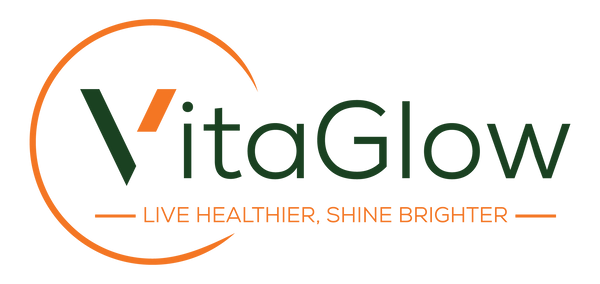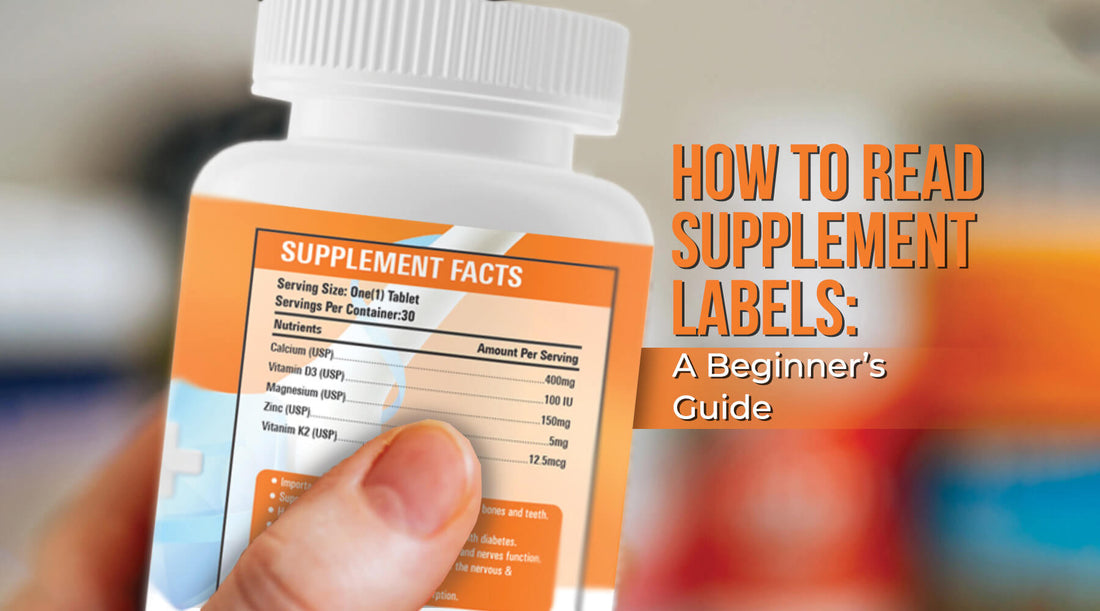Understanding how to read supplement labels is crucial for anyone looking to improve their health with multivitamins and nutritional supplements. With a wide range of options available, choosing the right products can be overwhelming. This guide aims to help you read supplement labels. As a top vitamin brand in Pakistan, we are here to help you make informed choices when you buy nutritional supplements.
Key Information to Look for on Supplement Packaging
Product Name and Description
The product name and description are the first things you should notice on a supplement label. Typically, a supplement's name indicates its major ingredient or intended application. Examples include "Vitamin C 1000 mg" or "Probiotic Complex." The description usually gives a quick rundown of its stated benefits. For instance, enhancing immunity, aiding digestion, and boosting energy. Understanding the product name and description helps you quickly determine if the supplement meets your health needs.
Servings per Container and Serving Size
Check the serving size and servings per container. Serving size is the recommended amount per session, like one tablet or a scoop of powder. Servings per container show how many doses are in the package. This helps you evaluate cost-effectiveness. For example, thirty servings last a month. This applies if taken daily.
Quantity for Each Serving
This section lists nutrients and their amounts per serving. For example, 500 mg of vitamin C and 30 mg of zinc. Knowing these amounts helps ensure proper dosages. Compare these levels with your dietary needs to avoid deficiencies or excesses.
Understanding Ingredient Lists and Certifications
Ingredient List
Ingredients are usually listed in weight order. The first ingredient has the highest quantity. Active ingredients, such as vitamins, minerals, and herbs, provide health benefits. Excipients or inactive ingredients, are added for purposes like flavor enhancement. They also aid in pill binding and preservation. Understanding the distinction between active and inactive ingredients helps identify components that contribute to the supplement's effectiveness.
Quality Certifications and Seals
GMP NSF and USP certifications, for example, are necessary for supplements to be stable and safe. They check to make sure strict rules are adhered to ensure accurate labeling. Consistent product composition shows secure component procurement.
Allergen Information
Look for information about allergies, especially if you have a reputation for being sensitive. Common sensitivities include shellfish; dairy is another frequent allergen. Nuts, gluten, and soy may also be present. This information is frequently provided in the ingredient list. Sometimes it is listed separately. Understanding allergies ensures that using the supplement is risk-free.
Expiration Date
A supplement's expiration date has a significant impact on both its efficacy and safety. Over time, the concentration of active chemicals in supplements may drop. This makes them less effective. Using vitamin supplements beyond their expiration date can be risky. Before using, make sure you check the expiration date.
Comparing Different Supplement Brands
Researching Brand Reputation
Choose brands with a strong history of reliability. Opt for brands with a record of achieving customer satisfaction. Reputable brands often implement stricter quality control procedures. They invest in research and development. This ensures that they maintain high standards.
Price vs. Quality
Balance price and quality when selecting supplements. It may be tempting to choose the cheapest option. However, lower-quality ingredients can compromise effectiveness. Quality components should be maintained at a reasonable price.
Customer Reviews and Testimonials
Customer reviews and testimonials are excellent sources for assessing a supplement's efficacy and reliability. Look for reviews from reputable buyers. They should have used the product for an extended period. Read both positive reviews and negative reviews. This provides a balanced perspective.
Transparency and Ingredient Sourcing
Select brands that are transparent about their ingredient sourcing. Their manufacturing processes should also be clear. Transparency indicates a brand's commitment. Quality and integrity are ensured through this approach. Check product labels. Visit the brand's website. Look for detailed information. This includes manufacturing facilities. Also, consider ingredient origins.
Understanding supplement labels is crucial for improving health with vitamin supplements and nutritional supplements. By learning to read and interpret labels, you can make informed choices. You ensure they meet your health needs. And standards. Always read labels carefully before purchasing to avoid unwanted ingredients. Ensure proper dosages and choose high-quality supplements. Remember, health is an investment. Taking time to understand what you’re consuming prioritizes well-being. Empower yourself to navigate the supplement world confidently, whether you are new or experienced.







